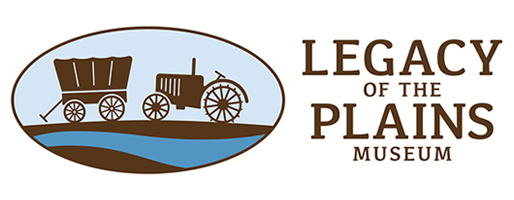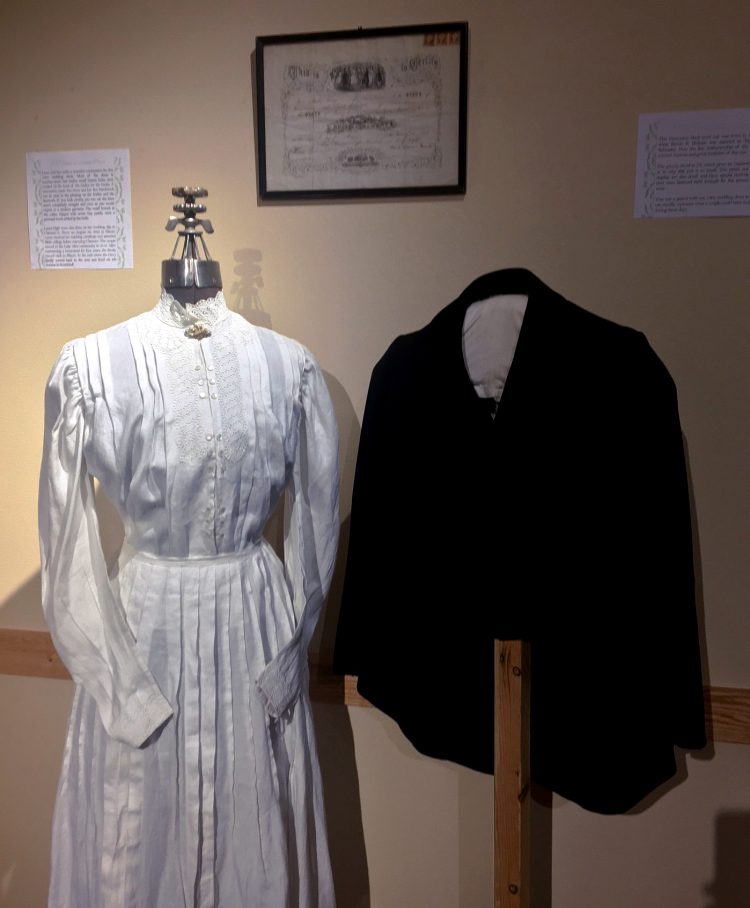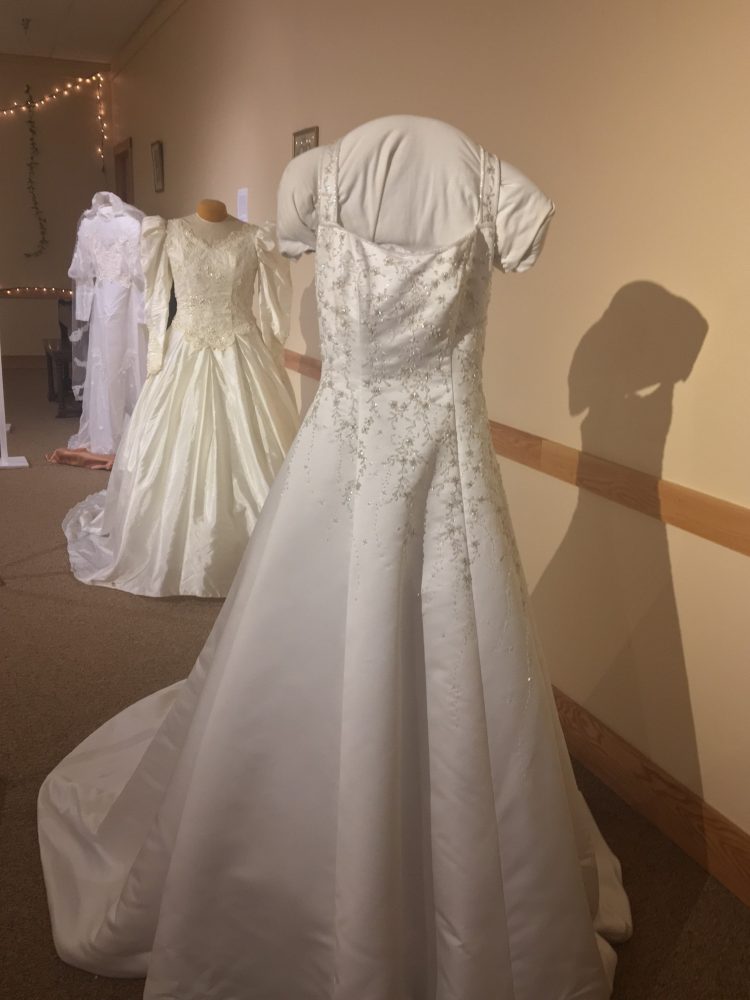Imagine Pachelbel’s Canon, the scent of fully-bloomed flowers greeting your senses, and an entire group of guests standing to watch the bride make her grand entrance. It’s easy to picture yourself here because we’ve all been to at least one wedding. Since summer is the busiest time of year for weddings, it was felt that having a wedding exhibit for this time of year was perfect. Inspiration was taken from summer weddings with their bright, floral elements and whimsical feel.
The progression of wedding dress styles over the past 130 years is the main highlight of this display. A peach colored 1893 wedding dress is the first dress on display in the gallery. It serves as a great example for wedding attire in the 19th century. During this time, a dress worn for a wedding wasn’t just a wedding dress. Instead, it was likely the bride’s Sunday best or a very nice dress. Brides didn’t expect to wear the dress on only one occasion. Instead, these dresses were worn over again for different special occasions. White fabric was nearly impossible to clean by hand and was reserved for the wealthiest members of society, which further p
Evolution of wedding dresses does not stop at the style. The change in colors, materials, and embellishments represent shifts in psychology over decades. Ideals of what a woman should look like, especially on her wedding day, heavily contributed to this. Fashion trends drew directly from the ideals as women tried to fit into society’s roles for them. A major influence of changes in styles came from Queen Victoria of England who wore a white, lace covered gown to her 1840 wedding. While the silhouettes and embellishments changed considerably over time, white dresses grew in popularity after 1840. The spread of illustrated magazines also contributed to this increase in white dresses being worn.
Over time, the appearance of wedding dresses changed as can be seen in the exhibit. Styles turned from more simplistic to elegant as satin and other fabrics were worn in increasing numbers. The transitions from the modest dresses from the early 20th century are seen in dresses from the 1960s and later. Shorter sleeves, unique embellishments, and different styles all marked changing fashions as well as perspectives on what was appropriate for a woman to wear.
The dresses on display may take the centerpiece for this exciting exhibit yet there are a collection of wedding related artifacts on display. The accessories worn along with wedding attire as part of the whole ensemble are often as special as the wedding dresses themselves. Whether its heirloom jewelry, a borrowed pair of shoes, or something other significant to the couple, these personal touches always give special meanings to a wedding.
Artifacts on display in this exhibit range from a wedding shawl to dried flowers that were once used as corsages to a rocking chair given as a wedding gift. Items from the archives, including marriage certificates and wedding portraits are also on display.
And the Bride Wore… will be in the Temporary Gallery until the end of August. Admission is free to this exhibit but donations are encouraged.
A fundraising event will also accompany this exhibit. Legacy of the Brides Historical Fashion Show. This fun event, featuring a light lunch and a fashion show, will take place on Saturday, June 9th at 11 AM. Wedding dresses will be worn by models and a light lunch will be served after the show! If you would like to attend this event, tickets are for sale now at the museum.
Prices are staggered depending on the seating. VIP seating, at the end of the catwalk, are $25. The mid-level seats are $20 and the back row seats are $15.
For more information on any of the topics covered in this post or if you would like to purchase tickets for the fashion show, please call us!



